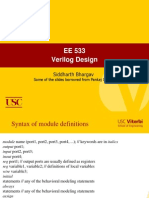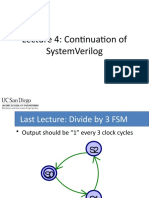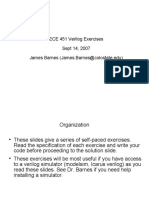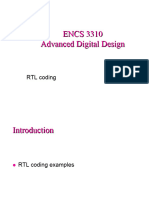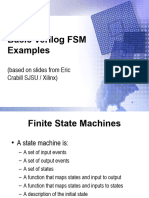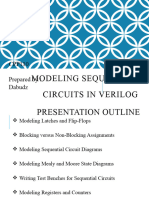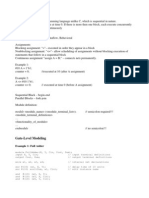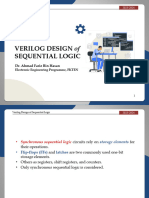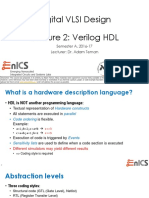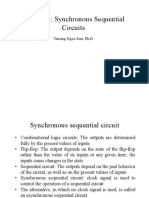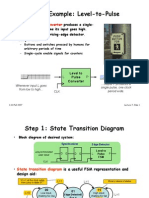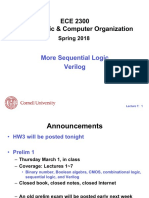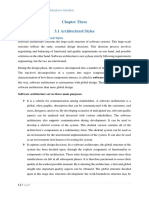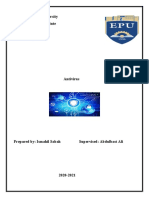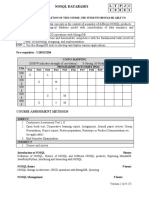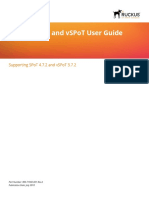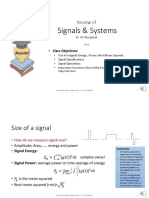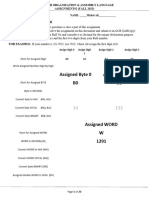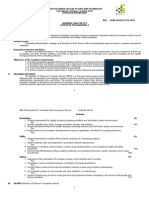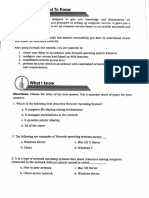0% found this document useful (0 votes)
38 views17 pagesLecture 3: Continuation of Systemverilog
The document discusses SystemVerilog clocked always statements which are used to describe combinational logic gates and flip-flops. It provides examples of how to describe a D flip-flop, a resettable D flip-flop, and how clocked always statements work together with non-blocking assignments and templates to generate the appropriate hardware during synthesis. Templates using if-then-else statements allow specifying reset conditions and how registers should be initialized and updated each clock cycle.
Uploaded by
Sivasubramanian ManickamCopyright
© © All Rights Reserved
We take content rights seriously. If you suspect this is your content, claim it here.
Available Formats
Download as PPTX, PDF, TXT or read online on Scribd
0% found this document useful (0 votes)
38 views17 pagesLecture 3: Continuation of Systemverilog
The document discusses SystemVerilog clocked always statements which are used to describe combinational logic gates and flip-flops. It provides examples of how to describe a D flip-flop, a resettable D flip-flop, and how clocked always statements work together with non-blocking assignments and templates to generate the appropriate hardware during synthesis. Templates using if-then-else statements allow specifying reset conditions and how registers should be initialized and updated each clock cycle.
Uploaded by
Sivasubramanian ManickamCopyright
© © All Rights Reserved
We take content rights seriously. If you suspect this is your content, claim it here.
Available Formats
Download as PPTX, PDF, TXT or read online on Scribd
/ 17




